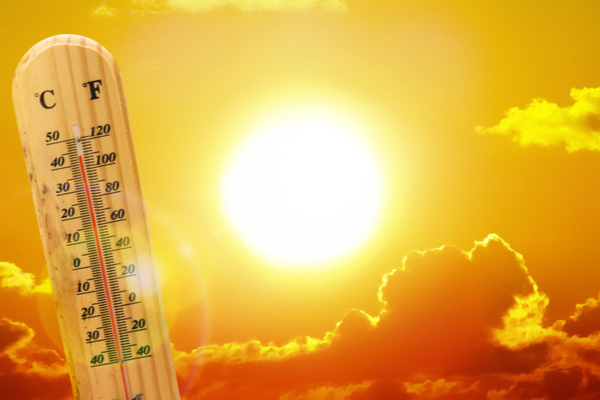Summers are now so brutally hot that the US government created a new website, heat.gov, to help Americans stay safe during dangerous heat spells. It features maps that show current heat conditions across the country and provides other tools and resources to help people beat the heat.
The main goal of the website is to prevent heat-related illness and death by sharing up-to-date information on extreme heat. Heat kills more people in the US than any other weather disaster. Often, it disproportionately harms vulnerable pockets of people, including children, older people, and communities of color who live in urban and formerly redlined neighborhoods designed in a way that traps heat.
“We don’t have to accept this. Right? This doesn’t have to be this way,” Secretary of Commerce Gina Raimondo said during a press briefing on the new website. “You could be a mom trying to decide this summer, ‘is it safe for your kids to play outside? To go to camp?’ … The information on heat.gov is designed to help you [with] concrete, actionable information to help you navigate the risks.”
Heat-related deaths are largely avoidable if people can take precautions, like avoiding physical activity outside and finding a safe place where they can stay cool. That’s why officials are asking the public to prepare for extreme heat the way they would for any other impending calamity, like a major storm.
One of the first things you’ll see on the homepage is a big, interactive map showing which regions in the US are currently under heat alerts. For instance, today, you’ll see that Tulsa, Oklahoma, is highlighted pink to show that it’s currently under an “excessive heat warning.” Clicking on the highlighted regions pulls up a box with more information on the alert from the National Weather Service, which forecasts “dangerously hot conditions” today and tomorrow as the heat index reaches a scorching 112 degrees Fahrenheit. (A heat index is a measure of temperature and humidity, or what it “feels like” outside.)
You can also use the website to pull up predictions for specific regions way into the future. Click on the tab farthest to the right, labeled “Days Above 90 deg F in 2050.” You’ll see that by then, if climate change continues unchecked, Tulsa is expected to experience 107 days a year with temperatures above 90 degrees Fahrenheit. That’s compared to an average of 66 days a year with temperatures that high between 1976 and 2005.
There are more links and data visualizations throughout the website that break down tons of information, like which parts of a city are hottest during different times of the day and how many emergency department visits are heat-related. One of my favorite features is a little button you can click on the left-hand side of the website (above the share icon) that will translate the page into dozens of different languages.
As The Verge reports, more than 39,000,000 people in the US, more than one in 10 people, are under extreme heat alerts today, it says on the homepage of the new website. As worrying as that is, it already pales in comparison to July 20th — when nearly half the US population was under a heat advisory. And while summers have already grown hotter as climate change pushes global average temperatures higher, even more extreme weather is on the way. According to the website Science, the average annual temperature of the continental US is projected to climb by up to 8.7 degrees Fahrenheit higher by the end of the century.
“This summer, with its oppressive and widespread heatwaves, is likely to be one of the coolest summers of the rest of our lives,” Raimondo said. “That’s pretty scary.”
—
Photo Credit: Ed Connor / Shutterstock.com
